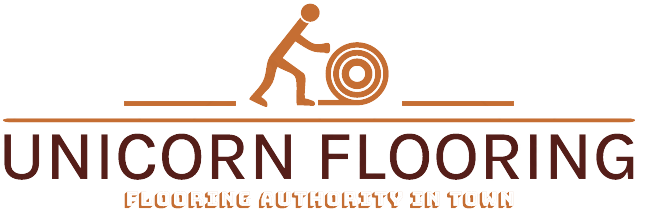Tennis Court Flooring in Pakistan
Tennis is growing steadily in Pakistan — from club play in Lahore and Karachi to schools and community projects in smaller cities. One of the most important, and often overlooked, decisions when building or renovating a court is the choice of flooring. The surface affects playability, maintenance, cost, durability and even player safety. This guide walks you through everything you need to know about tennis court flooring in Pakistan: the common surface types, how climate and local conditions affect choices, construction steps, cost ranges, maintenance tips, accessibility & safety considerations, and how to pick a contractor. Whether you’re an administrator planning a new facility, a club manager doing a resurfacing, or a homeowner building a private court — read on.
Why the playing surface matters?
The court surface determines:
- Ball behaviour — bounce height, speed and spin response.
- Player movement & safety — traction, shock absorption, injury risk.
- Maintenance needs — cleaning, seasonal care, repairs.
- Lifespan & replacement frequency — initial costs vs lifecycle costs.
- Aesthetics & branding — colour, finish, lines.
- Choosing the wrong surface can lead to high repair bills, poor player experience and even reduced usage. In Pakistan’s climate — hot summers, strong sunlight and a monsoon season in many regions — selecting a surface with appropriate UV resistance, drainage and durability is crucial.
Common types of tennis court flooring (with pros & cons)
1. Acrylic / Hard Court (cement or asphalt base + acrylic cushion coating)


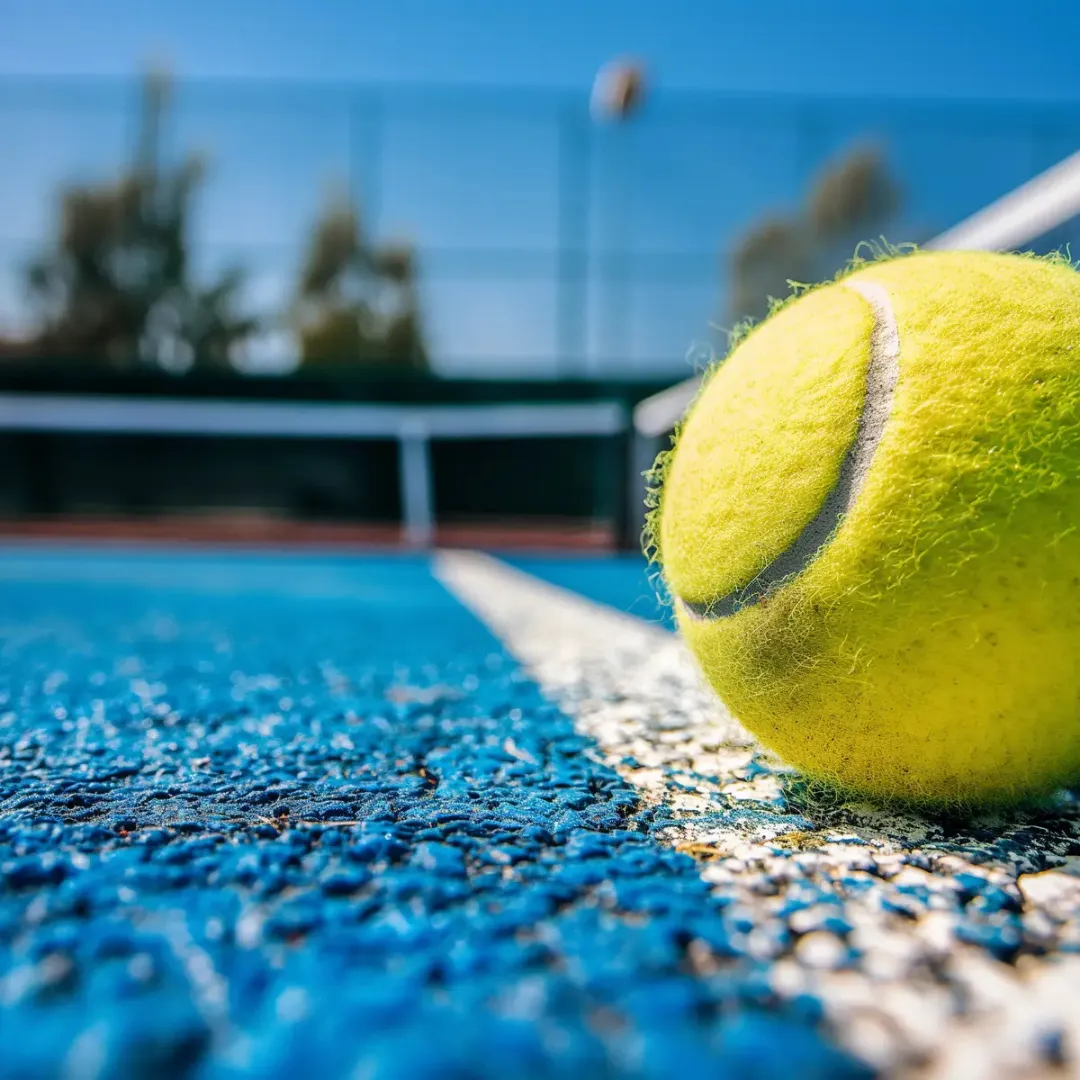
Overview: This is the most common modern tennis surface worldwide — a rigid base (asphalt or concrete) with multiple layers of acrylic and sometimes a cushioned layer.
Pros
- Versatile for recreational and competitive play.
- Relatively low maintenance compared to grass/clay.
- Good durability (10–20 years for the base; surface coatings need renewal).
- ITF speed can be adjusted by choosing coatings and sand texture.
- Easy to line-mark and customise colours.
Cons
- Harder on joints unless cushioned layers are used.
- Surface can crack if base is poorly installed or due to ground movement.
- Requires proper drainage to avoid pooling during monsoon seasons.
Suitability in Pakistan: Popular in club courts in Lahore, Karachi, Islamabad and private courts. Must use UV-stable coatings and ensure good drainage for monsoon resilience.
2. Artificial Grass / Synthetic Turf (with sand infill)
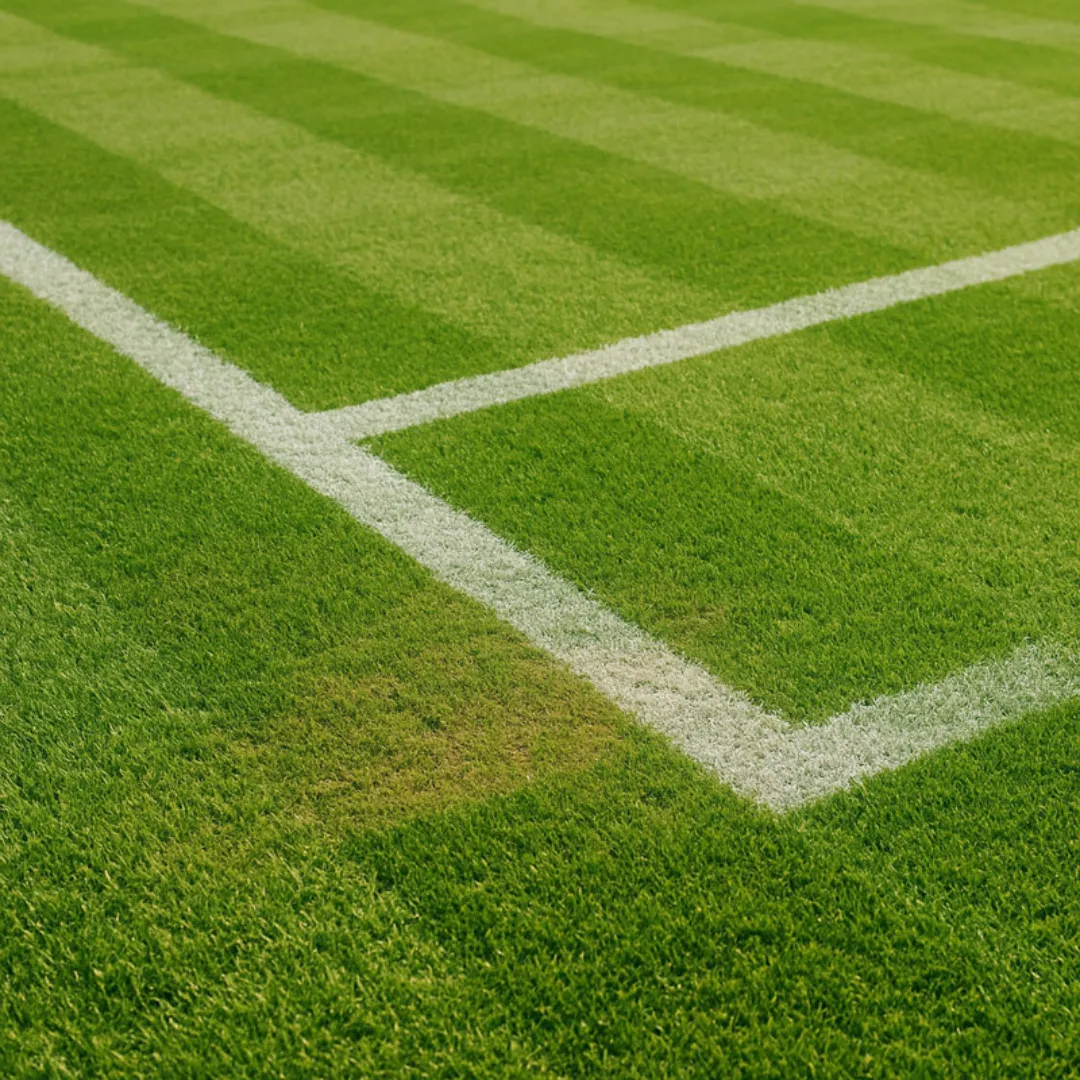
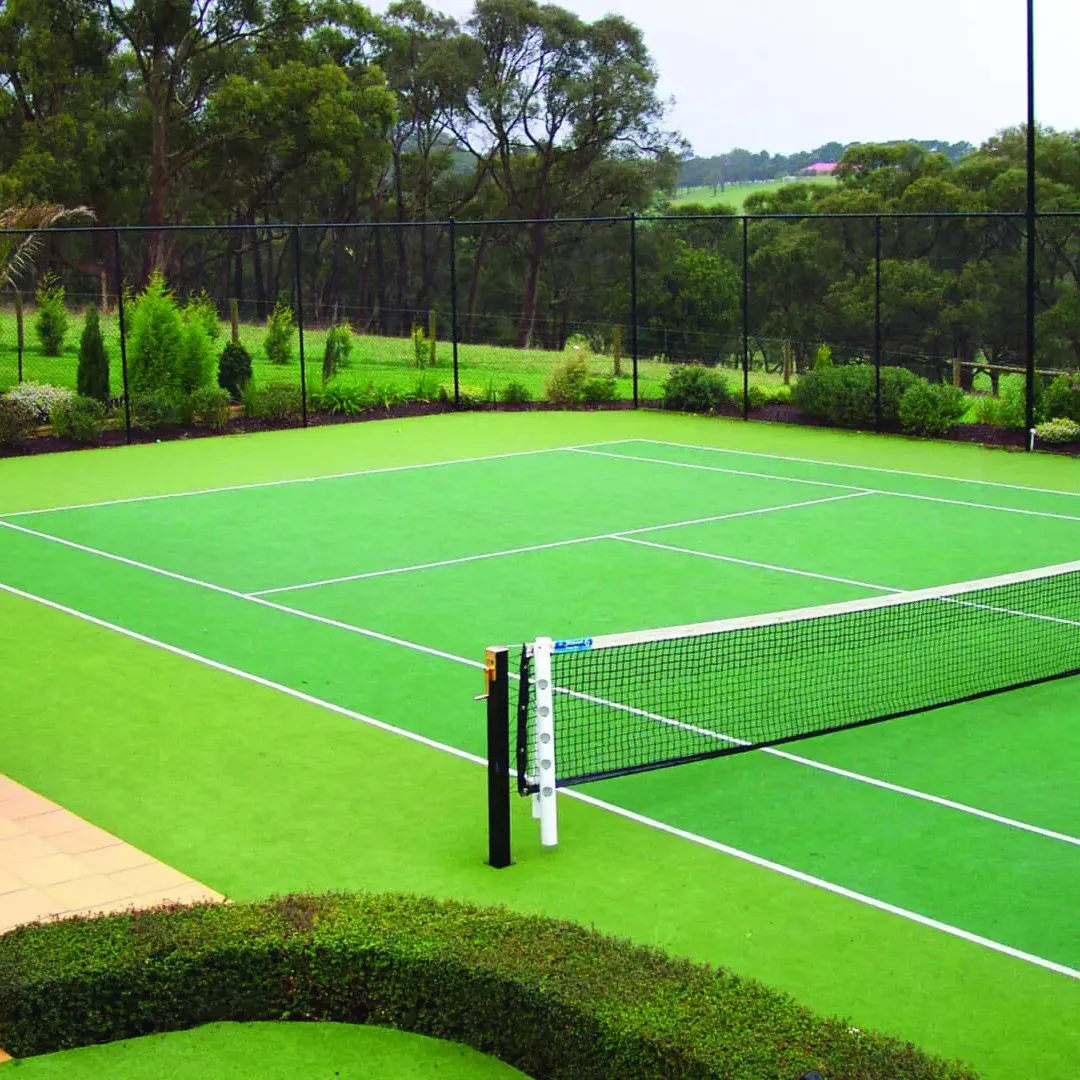
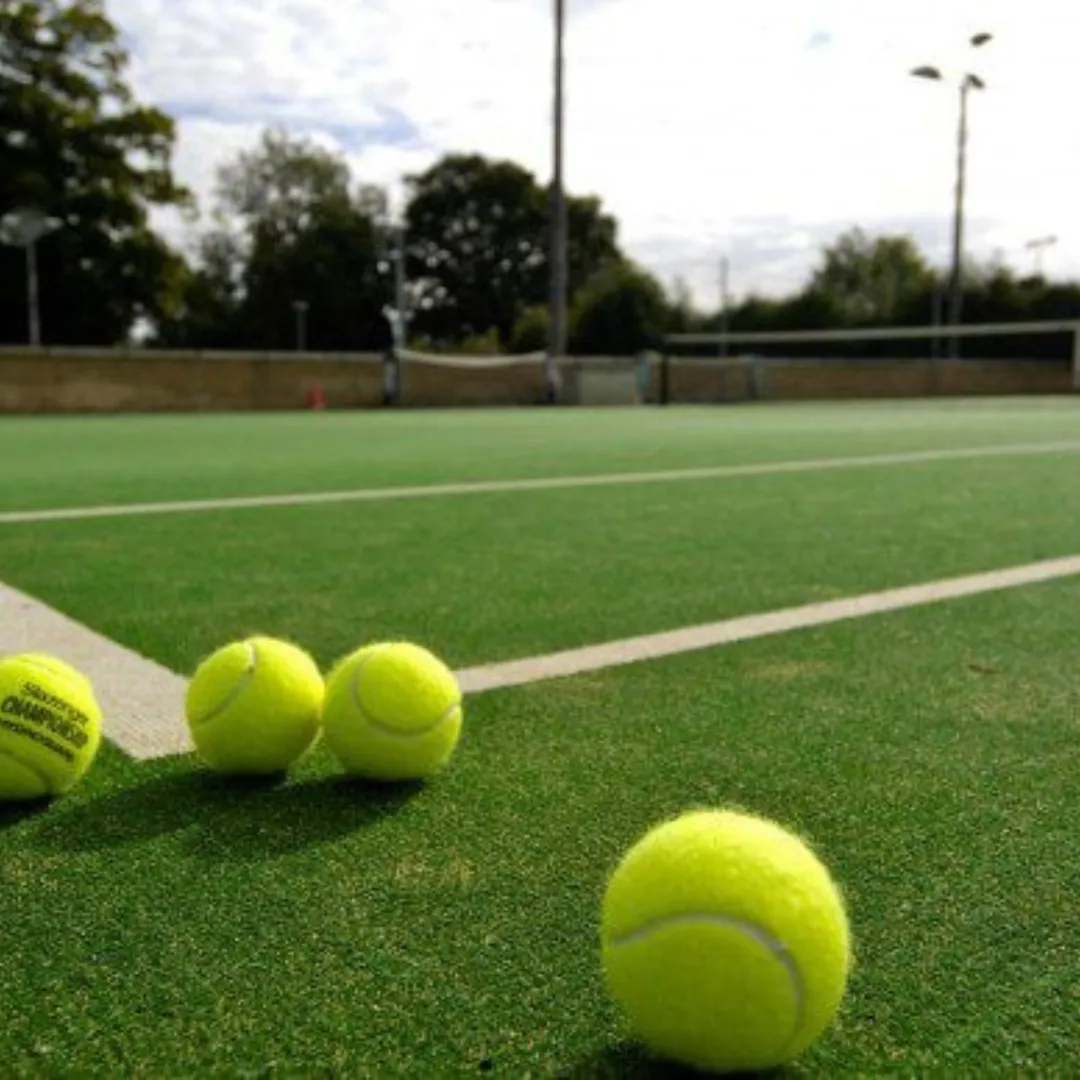
Overview: Synthetic grass with pile and infill can be installed over shockpad or concrete base. Increasingly used for multi-sport courts.
Pros
- Softer feel and lower joint impact than hard courts.
- Green appearance; low watering compared to natural grass.
- Can be used for multiple sports (e.g., tennis & mini-soccer).
- Good shock absorption when combined with a proper underlayer.
Cons
- Ball bounce can be less consistent, sometimes slower.
- Heat retention — turf surface can get hot in direct sun.
- Requires brushing and periodic replacement of infill and turf.
- Drainage layer must be well-designed for monsoon.
Suitability in Pakistan: Good for schools, clubs wanting a softer surface, and communities where multipurpose use is valued. Not preferred for high-level competition tennis because bounce uniformity differs from hard courts.
3. Clay (natural or synthetic)
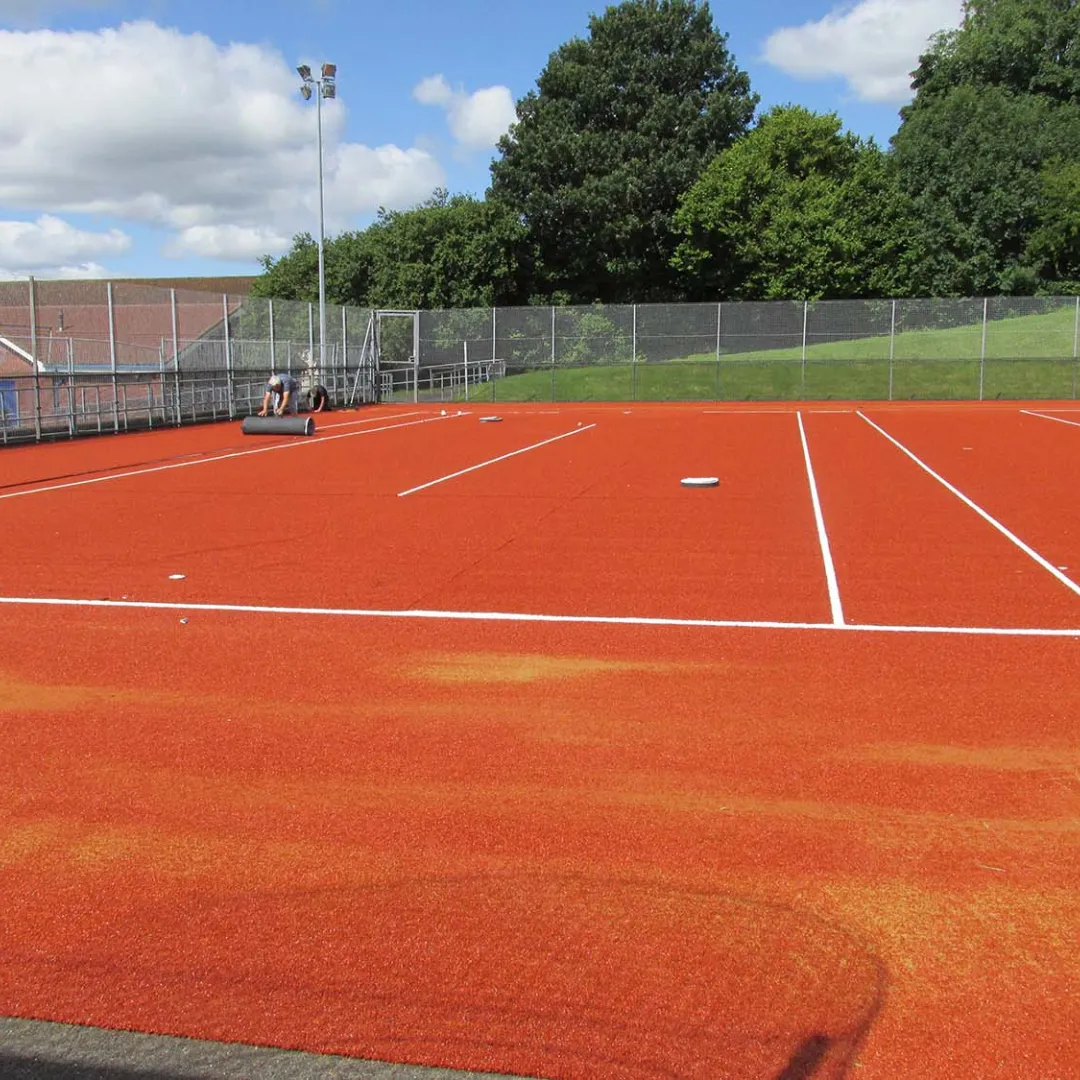

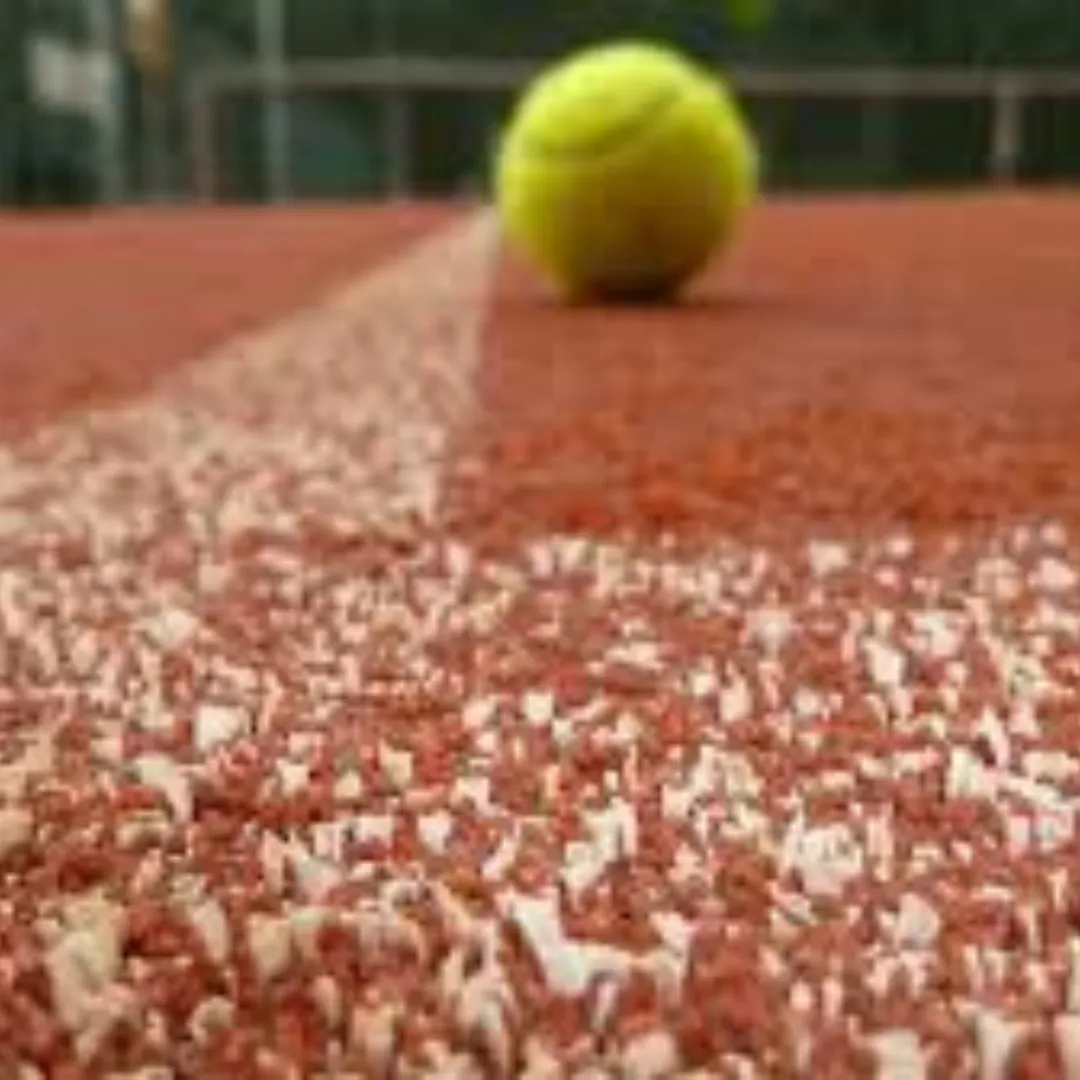
Overview: Traditional red clay (crushed brick) or synthetic clay systems provide classic sliding play and slower ball speed.
Pros
- Slow surface — long rallies, excellent for developing baseline play.
- Lower impact on joints.
- Players can slide; fewer abrupt stops.
Cons
- Intensive maintenance: daily sweeping/rolling, water management.
- Vulnerable to heavy rain — playable days drop in monsoon season.
- Not common in Pakistan due to high maintenance and water needs.
Suitability in Pakistan: Limited. Some private academies may build clay courts for training, but water scarcity, maintenance intensity and monsoon damage make clay a less practical choice for most facilities.
4. Brick-Red / Har-Tru (fast-drying clay-like)
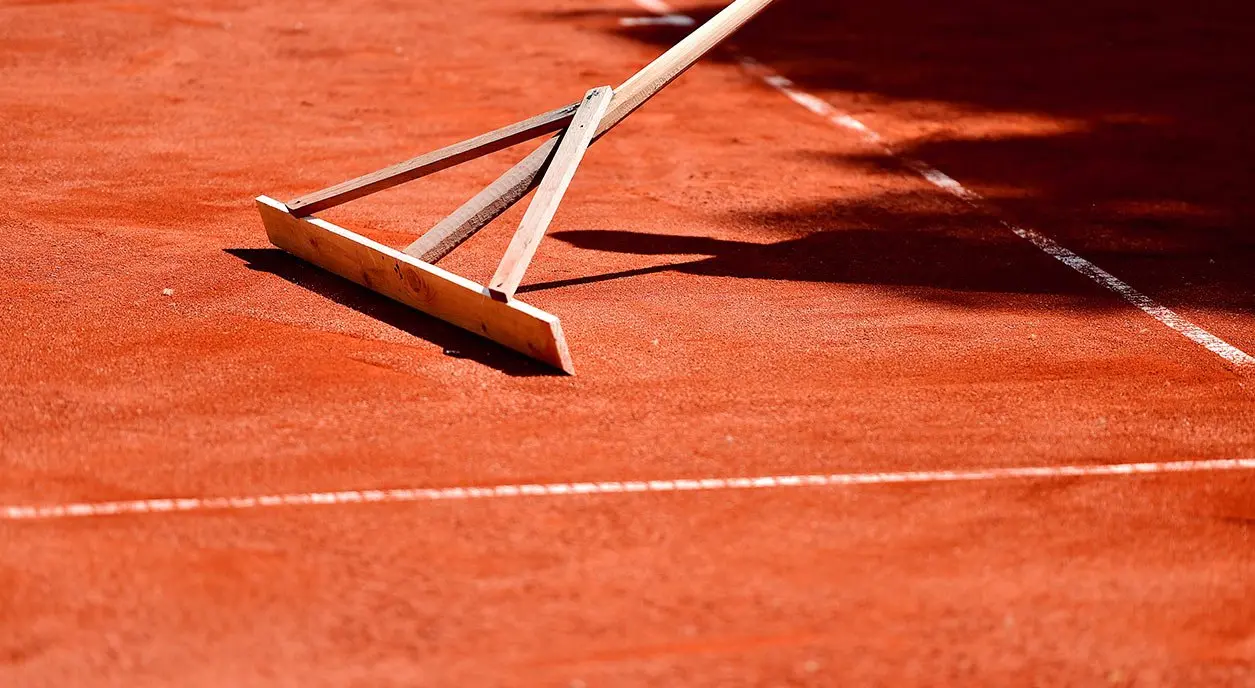
Overview: Har-Tru (manufactured natural stone) is similar to clay but drains better.
Pros & Cons: Similar to clay, slightly better drainage; still high maintenance.
Suitability: Rare in Pakistan — niche use.
5. Modular Interlocking Tiles (polypropylene)
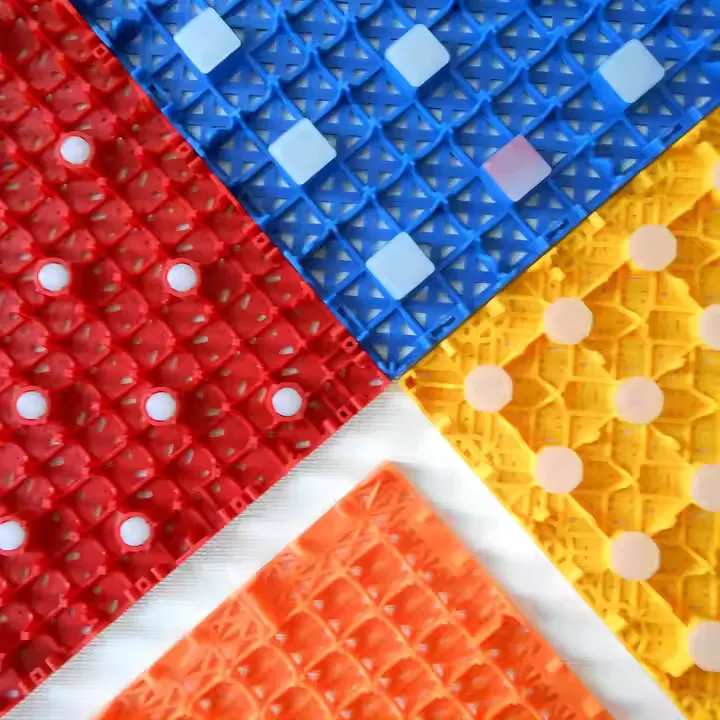
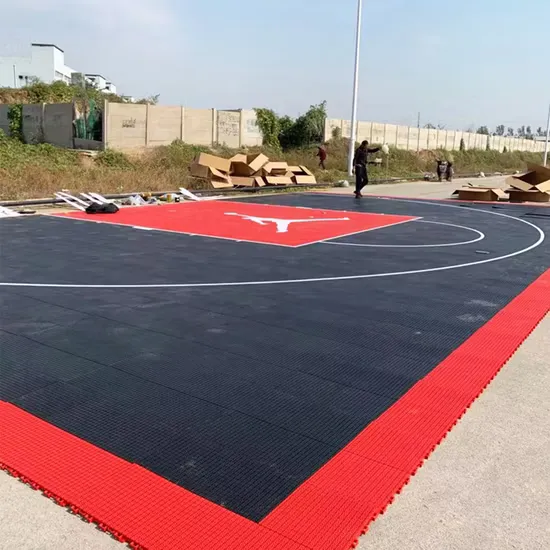
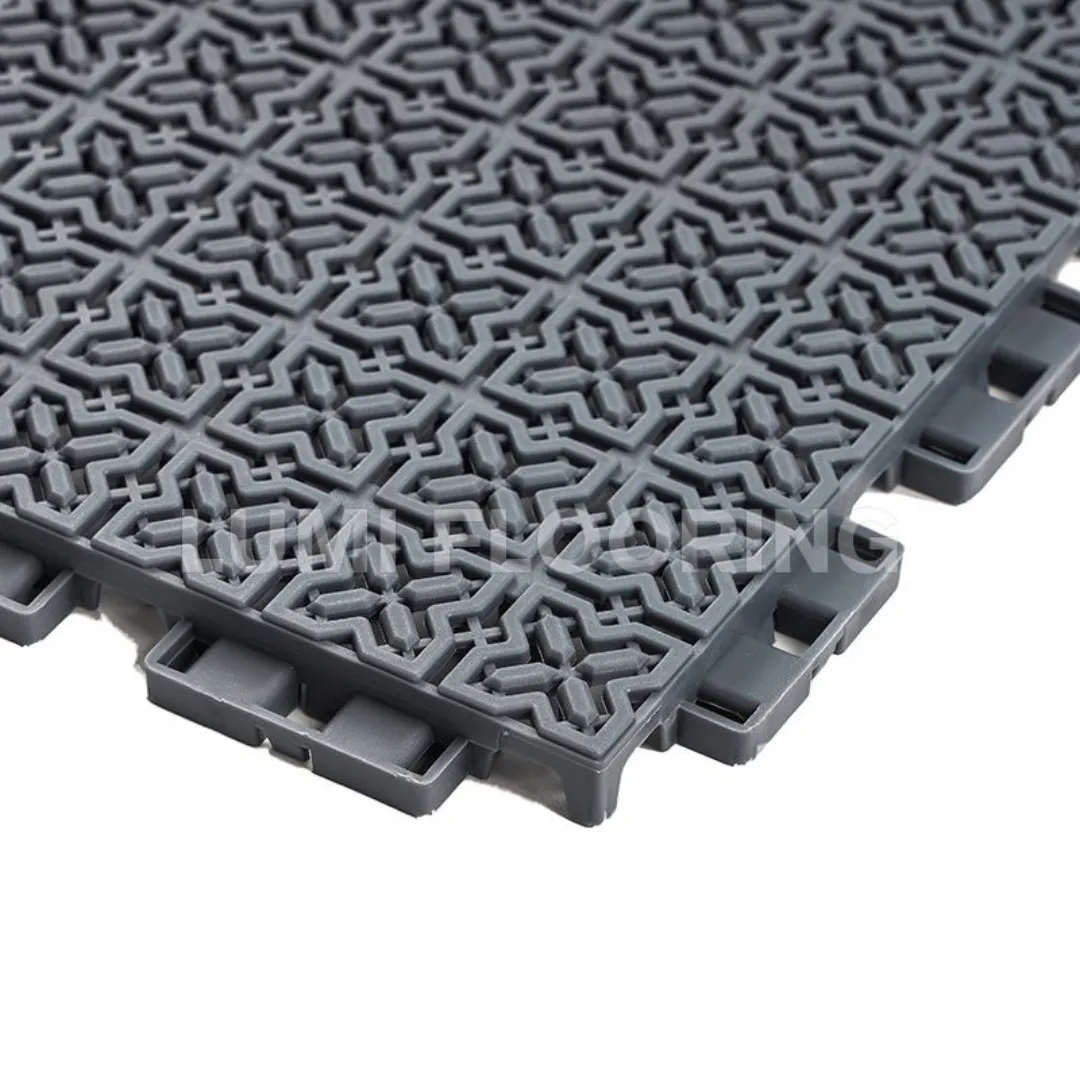
Overview: Snap-together plastic tiles that sit on a leveled sub-base.
Pros
- Rapid installation and repair.
- Good drainage and low water retention.
- Variety of textures and firmness; some provide cushioning.
- Portable and used for temporary or multi-use courts.
Cons
- Ball bounce and speed differ from traditional tennis surfaces.
- Possible thermal expansion issues under intense heat if tiles are low quality.
- Aesthetics less “premium” than acrylic finishes.
Suitability in Pakistan: Excellent for clubs or community courts where quick installation and drainage are priorities; also for indoor/outdoor multipurpose spaces. Choose high-quality UV-stable tiles rated for tennis loads.
Climate and site-specific considerations for Pakistan
Pakistan’s regional diversity matters. Here’s what to plan around:
Heat & UV
Cities like Karachi, Lahore, Multan and Sukkur experience very high temperatures and intense UV. Use UV-resistant coatings, pigments and adhesives. Lighter surface colours can reduce surface temperature slightly, but not dramatically.
Monsoon & Heavy Rains
In Sindh and Punjab, monsoon season can cause heavy downpours. Proper gradient, perimeter drains, and sub-base drainage are essential — especially for asphalt/concrete with acrylic surface to avoid ponding and surface delamination.
Soil Movement & Groundwater
Areas with expansive clays or fluctuating groundwater levels (certain parts of Punjab) require a robust sub-base and movement joints in concrete to avoid cracking.
Dust & Sand
Desert-adjacent cities need surfaces that can be swept clean easily; polymer coatings that resist sand abrasion are preferable.
Water Availability
For clay courts and heavy cleaning, water availability may be a constraint. Consider low-water options (acrylic, synthetic turf, tiles) if water access is uncertain.
Construction steps — from ground up
A well-built court is a system. Typical steps for an acrylic hard court (most common):
Site survey & layout
Confirm orientation (north-south recommended to reduce sun glare), soil test and drainage plan.
Excavation & subgrade preparation
Strip topsoil, compact the subgrade and build stable layers.
Sub-base layer (crushed stone)
Typically several inches of compacted aggregate for load distribution and drainage.
Base layer (asphalt or concrete)
- Asphalt preferred for flexibility and cost-effectiveness.
- Concrete offers longer life but needs expansion joints and excellent leveling.
Crack & joint treatment
For concrete, seal joints; for asphalt, ensure surface is smooth and free of defects.
Primer / Leveling coats
A polymer binder or leveling layer to smooth minor irregularities.
Cushion or Shockpad
For player comfort and joint protection — especially in high-level courts.
Acrylic Coating Layers
Multiple layers (base coat, textured coats with silica sand for traction, finishing coats).
Line Marking & Nets
Apply thermoplastic or paint lines, install net posts and nets to regulation heights.
Final Inspection & Curing
Ensure drainage works, verify slope, allow coatings to cure before play.
For modular tiles, the base is a compacted sub-base (granular/stone), and tiles are snapped together, then lines are applied with tape or tile colour differentiation.
For synthetic turf, key steps include shockpad installation, turf roll laying, infill distribution, and perimeter fastening.
Estimated costs (indicative ranges in PKR)
Costs vary by city, material quality and site conditions. These are ballpark figures to help budgeting (2025 price-level approximation — local contractor quotes may vary):
- Asphalt base + standard acrylic finish: PKR 3,000 – 4,500 / sq. ft.
- Includes base work, drainage, acrylic layers and basic line marking.
- Asphalt + cushioned acrylic system (better shock absorption): PKR 4,500 – 6,500 / sq. ft.
- Concrete is more expensive but typically longer-lived.
- Synthetic turf (good quality) over shockpad: PKR 2,500 – 5,000 / sq. ft.
- Modular interlocking tiles: PKR 1,800 – 4,000 / sq. ft.
- Depends heavily on tile grade, sub-base prep, and installation method.
- Clay court (initial setup & materials): PKR 1,500 – 3,500 / sq. ft.
- But operating costs (watering, rolling, daily upkeep) can be high.
Notes
- These per-square-foot rates include materials and labor but exclude fencing, lighting and landscaping.
- Lighting and fencing are significant extra costs — budget separately (floodlights, poles, electrical work).
- Prices can differ between Karachi, Lahore, Islamabad and smaller towns due to logistics and availability of materials/ contractors.
Maintenance & care (practical schedule)
Good maintenance extends life and improves player experience. Example maintenance plan for acrylic courts:
Daily / After play
- Sweep or blow off dust, leaves and sand.
- Remove standing water; ensure drainage remains clear.
Weekly
- Brush the surface to redistribute silica sand (if used).
- Inspect for debris, small cracks or blistering.
Monthly
- Clean surface with a soft washing (low-pressure water and neutral detergent) in shaded hours.
- Check net tension and posts.
Annually
- Inspect entire surface for peeling, UV damage, cracks. Reapply touch-up coatings as needed.
- Check perimeter drains and gutters before monsoon season.
Every 5–10 years
- Acrylic resurfacing/topcoats to restore texture, friction and colour.
- Base repairs (patch asphalt, fill cracks); major base replacement may be needed after 15–25 years depending on materials and use.
For modular tiles, check interlocks, replace damaged tiles, and keep joints free of sand. For synthetic turf, brush the fibres, replenish infill, and disinfect periodically to prevent odour and microbial growth.
Seasonal advice for Pakistan
- Pre-monsoon: Clear drains, reseal any cracks, prepare tarpaulins for rapid cover if needed.
- During monsoon: Suspend play during heavy storms; use covers for nets/benches.
- Summer: Provide shaded seating and encourage play in cooler hours; ensure hydration stations.
Safety & accessibility
- Shock absorption: Consider cushioned systems (cushion acrylic or shockpads) at facilities with frequent players or juniors to reduce injury risk.
- Slip resistance: Textured finishes with graded silica sand give predictable traction even when slightly wet.
- Accessible design: Pathways, ramps and spectator seating should follow accessibility standards. Ensure surface transitions (court to walkway) are flush and non-trip.
- Lighting: For evening play, use sports-grade LED floodlights. Ensure even illumination and minimal glare for safe play.
- Line visibility: Use high-contrast line colours and ensure lines are non-slip if painted.
Choosing materials: matching surface to purpose
- Competitive clubs / tournaments: Acrylic cushioned systems or premium concrete + acrylic for consistent bounce and ITF compliance.
- Training academies / schools: Modular tiles or acrylic depending on budget; focus on durability and low maintenance.
- Community multipurpose courts: Interlocking tiles or synthetic turf for versatility.
- Private home courts: Acrylic on asphalt is common; cushioned layers if players are older or joints are a concern.
Choosing a contractor: checklist
When interviewing contractors, ask for:
Experience & references — completed tennis court projects in Pakistan with photos and client contacts.
Site survey & written proposal — clear scope, materials, timelines and site-specific notes.
Material specs — brand names, UV-stability, warranty on coatings and tiles.
Sub-base profile — thicknesses and compaction specs for aggregate & asphalt/concrete.
Drainage plan — drains, slope and overflow strategy for monsoon.
Warranty & post-install support — repair guarantees, resurfacing options and cost estimates.
Safety measures — shockpad options, slip-resistance values and maintenance training for staff.
Project schedule & curing time — allow adequate time before first play.
Insurance & compliance — public liability, worker safety compliance and local permits.
Cost breakdown — separate line items for base, surface, lines, fencing, lighting, accessories.
Get at least two or three detailed quotes and visit completed sites if possible. A reputable contractor will provide a site-specific plan rather than a one-size-fits-all quote.
Final tips & summary
- Plan for your climate. In Pakistan, UV-proof materials and strong drainage are non-negotiable.
- Invest in a good sub-base. Surface coatings are only as good as the base beneath them; a poorly-prepared base leads to premature cracking and higher lifecycle costs.
- Balance upfront cost with lifecycle cost. Cheaper installations can cost more in repairs and frequent resurfacing.
- Choose materials that match use-case. Competitive play needs consistent bounce and maintenance predictability; community courts might prioritise cost and multipurpose use.
- Maintenance is key. A modest annual maintenance budget and routine cleaning will preserve surface performance and reduce long-term costs.
FAQ'S
For most clubs and private courts in Pakistan, an asphalt base with acrylic coatings (optionally cushioned) is the best balance of durability, playability and maintenance. Modular tiles and synthetic turf are good alternatives depending on multipurpose needs.
The base (asphalt or concrete) can last 15–30 years with good construction; acrylic topcoats typically need maintenance or renewal every 5–10 years depending on use and climate exposure.
If drainage is adequate and the surface dries quickly, courts can be playable after rains. Clay courts are the most impacted by heavy rain. Avoid play on wet clay and protect acrylic surfaces from prolonged ponding.
Standard court playing area is 78 ft × 36 ft (doubles). Recommended total area including runbacks and fencing is about 120 ft × 60 ft (approx), but measures can vary based on local design and fencing.
Indoor courts avoid weather limitations and UV damage, but require a suitable building envelope and ventilation — significantly raising costs. For year-round play and tournaments, indoor is excellent if budget allows.
